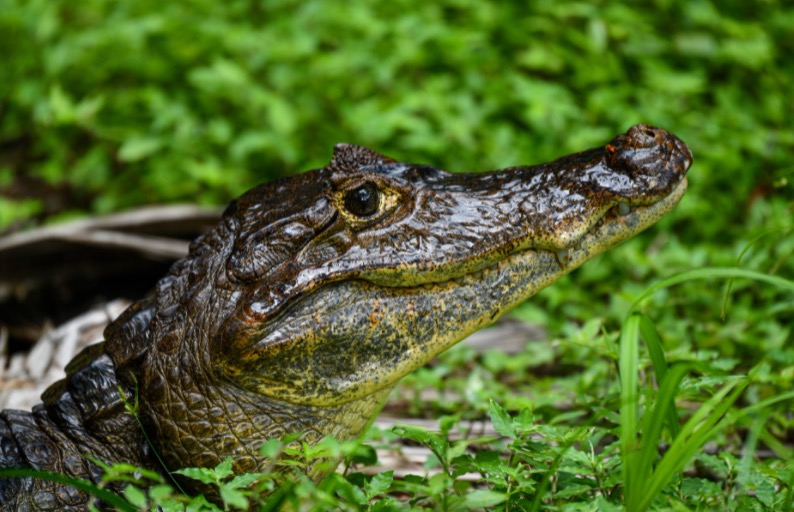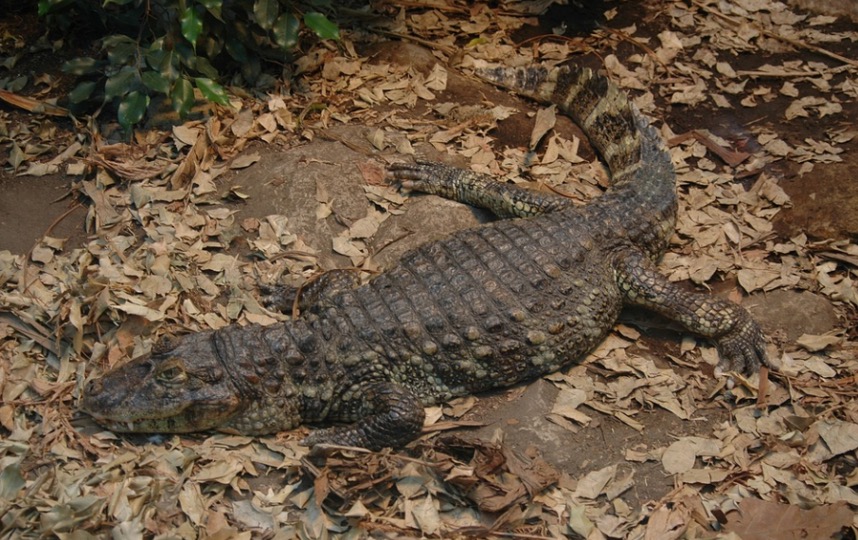Table of Contents
Caiman: All You Need To Know
Caiman is n animal belonging to the kingdom Animalia, phylum Chordata, class Reptilia and family Alligatoridae. The genus name of this species is Caiman, Paleosuchus and Melanosuchus. There are 6 variants of this species, belonging to the above variant. The habitat of this species is water i.e. lakes, rivers, swamplands of South and Central America, excluding the location Chile, of South America.

What is Caiman?
Caimans are one of the oldest reptile of the group archosaurs, which consists of dinosaurs, and have adapted to the evolution in a very slowly pace in 200 million years. Although there are no similarities, however, they share similarities with alligator and characteristics with the Caiman reptile.

Caimans have a huge jaw, with extremely strong and sharp teeth. The inner part, within the mouth is orange in color, while the alligators have teeth, which are conical and inside the mouth area region is beige in color. A similarity between both of them is that the caiman and alligator have a snout which is round in shape.

Alligators are huge in size than the caimans, even though the caiman’s black species is the one, which is larger, when it’s an adult. The black caiman male are 4 meters in length and is the hugest predator of the Amazon basin. The color of this species is dusky brown or green and grey, which is an advantage while camouflaging to the surrounding.

As caimans are incapable of breaking down the prey, so they directly swallow the complete prey, using their daggered shaped teeth and jaws to cut open the prey. As they cannot chew so they keep the dead body of prey under water so that it softens up and can be consumed by them.
Caiman Species
The 6 variants of Caiman are as follows:
1) Smooth fronted caiman: (Paleosuchus trigonatus)
2) Cuviers dwarf caiman: (Paleosuchus palpebrosus)
3) Black caiman: (Melanocuchus niger)
4) Yacare caiman ( Caiman yacare)
5) Broad snouted caiman (Caiman latirostris)
6) Spectacled caiman: (Caiman crocodiles)
In various region, these variants are found, thus there is no chance of competition for resources and area. However, the most abundant out of all of them is the spectacled caiman, found in the South and Central America. They are found in river, lakes, and flowing water bodies as well as human-made reservoirs like canals. As black caiman is huge it can also tolerate currents.
Fun Facts About Caiman!
Since the arrival of dinosaurs, this species of Caiman has existed. Various adaptations in this evolution period have made them thrive for millions of years.
1) Aestivation: It resembles the hibernation period, where animals are inactive due to the weather. However, aestivation is the period when an animal goes underground into a burrow, due to hot and humid climate as well as food amount is very minimal, thus, they bury themselves to avoid the heat and its cooler. Once the temperature is normal, they will come out and get engaged. Hibernation will stay for months, but aestivation is only for weeks. Animals which can aestivate are tortoises, salamanders, cane toads and etc.
2) Strong Swimmers: although this species is semi- aquatic, but have evolved over the years and are excellent swimmers. To move in the water quickly, they use their tail, which helps to move against water and is flat and possesses large surface area. The movement of the tail is in a sinusoidal way, which is the side ways. For steering, legs are been used by caiman. Its body becomes streamlined, when it moving rapidly as the limbs is flat. Thus, the tail provides the main purpose of moving quickly in the water.
3) Involved Mothers: Caimans reproduces a huge number of byproducts at one time. They are said to be very agile and smart. Around one time, the nest can hold around 65 eggs. From the soil and the leaves and others the nest is constructed. In the nest as the leaves start to decompose, it provides the humidity to the eggs.
The gender of the caiman species is based on the temperature, if the water is cold, males are produced and in warm water females are produced. The nest comprises of several layers, so that both the genders are produced. After the eggs are opened, mother takes care of the child and if the mother is not there, the other female caimans, will take care of the offspring.
Caiman Citations
- No rapid and demarcating astroglial reaction to stab wounds in Agama and Gecko lizards and the caiman Paleosuchus – it is confined to birds and mammals. Histol Histopathol . 2020 Dec;35(12):1455-1471.
- Catecholamine neurons in the brainstem of the reptile Caiman crocodilus. J Comp Neurol . 1988 Apr 15;270(3):313-26.
- Paramyxovirus infection in caiman lizards (Draecena guianensis). J Vet Diagn Invest . 2001 Mar;13(2):143-51.







